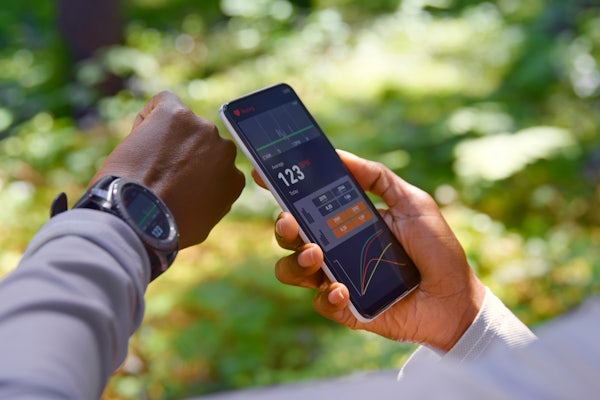Data from wearables could be a boon to mental health diagnosis
Washington University team uses Fitbit data, deep learning to detect depression, anxiety

Depression and anxiety are among the most common mental health disorders in the United States, but more than half of people struggling with the conditions are not diagnosed and treated. Hoping to find simple ways to detect such disorders, mental health professionals are considering the role of popular wearable fitness monitors in providing data that could alert wearers to potential health risks.
While the long-term feasibility of detecting such disorders with wearable technology is an open question in a large and diverse population, a team of researchers at Washington University in St. Louis showed that there is reason for optimism. They developed a deep-learning model called WearNet, in which they studied 10 variables collected by the Fitbit activity tracker. Variables included everything from total daily steps and calorie burn rates, to average heart rate and sedentary minutes. The researchers compiled Fitbit data for individuals more than 60 days.
When considering depression and anxiety risk factors, WearNet did a better job at detecting depression and anxiety than state-of-the-art machine learning models. Further, it produced individual-level predictions of mental health outcomes, while other statistical analyses of wearable users assess correlations and risks at the group level.
“Deep learning discovers the complex associations of these variables with mental disorders,” said researcher Chenyang Lu, the Fullgraf Professor in the McKelvey School of Engineering and professor of medicine in the School of Medicine. “Machine learning is our most powerful tool to extract these underlying relationships. Our work provided evidence based on a large and diverse cohort that it is possible to detect mental disorders with wearables. The next step is to convince a hospital system or some company to implement it.”
Researchers included Ruixuan Dai, who worked in Lu’s lab as a doctoral student and is now a software engineer at Google; Thomas Kannampallil, associate professor of anesthesiology and associate chief research information officer at the School of Medicine and associate professor of computer science & engineering in McKelvey Engineering; Seunghwan Kim, a doctoral candidate at the School of Medicine; Vera Thornton, an MD/PhD candidate at the School of Medicine; and Laura Bierut, MD, the Alumni Endowed Professor of Psychiatry.
The team presented its findings May 10 at the ACM/IEEE Conference on Internet of Things Design and Implementation. The paper was awarded the Best Paper Award for IoT Data Analytics at the conference.
Wearable data could be a boon to mental health diagnosis and treatment, according to Lu.
“Going to a psychiatrist and filling out questionnaires is time consuming, and then people may have some reticence to see a psychiatrist,” he said. “People are going about their lives while suffering from a disease that results in lower productivity and poorer life quality. This AI model is able to tell you that you have depression or anxiety disorders. Think of the AI model as an automated screening tool that could recommend that you see a psychiatrist.”
There is “an urgent need for an unobtrusive approach to detecting mental disorders,” the researchers said. “Early detection can help clinicians diagnose and treat mental disorders in a timely manner. It can also enable individuals to adjust their behaviors and mitigate the impact of the disorders.”
The Washington University researchers studied the data of more than 10,000 Fitbit users, the largest wearable cohort to be part of a study. Previous studies considered small cohorts, some as small as 10 people, the largest topping out in the hundreds of users.
The Washington University study included a broad range of ages, races, ethnicities and education levels, the most diverse cohort to date. Their data came from the National Institutes of Health’s “All of Us” research program. The program houses a collection of datasets that are designed to accelerate biomedical research and precision medicine.
Unrelated research also has reported favorably on wearables being a “promising way for longitudinal monitoring” of assessing mental status. Other “digital phenotypes,” such as sleep and behavior patterns, can be gauged by wearables, the Washington University researchers wrote.
Dai R, Kannampallil T, Kim S, Thornton V, Bierut L, Lu C. Detecting Mental Disorders with Wearables: A Large Cohort Study. ACM/IEEE Conference on Internet of Things Design and Implementation (IoTDI'23), May 2023. https://doi.org/10.1145/3576842.3582389
This research was supported by the Fullgraf Foundation. The analysis and result are based on "All of Us" research program, which is supported by the National Institutes of Health.






